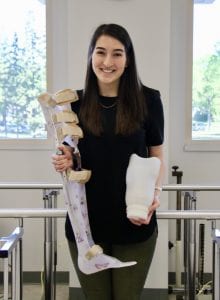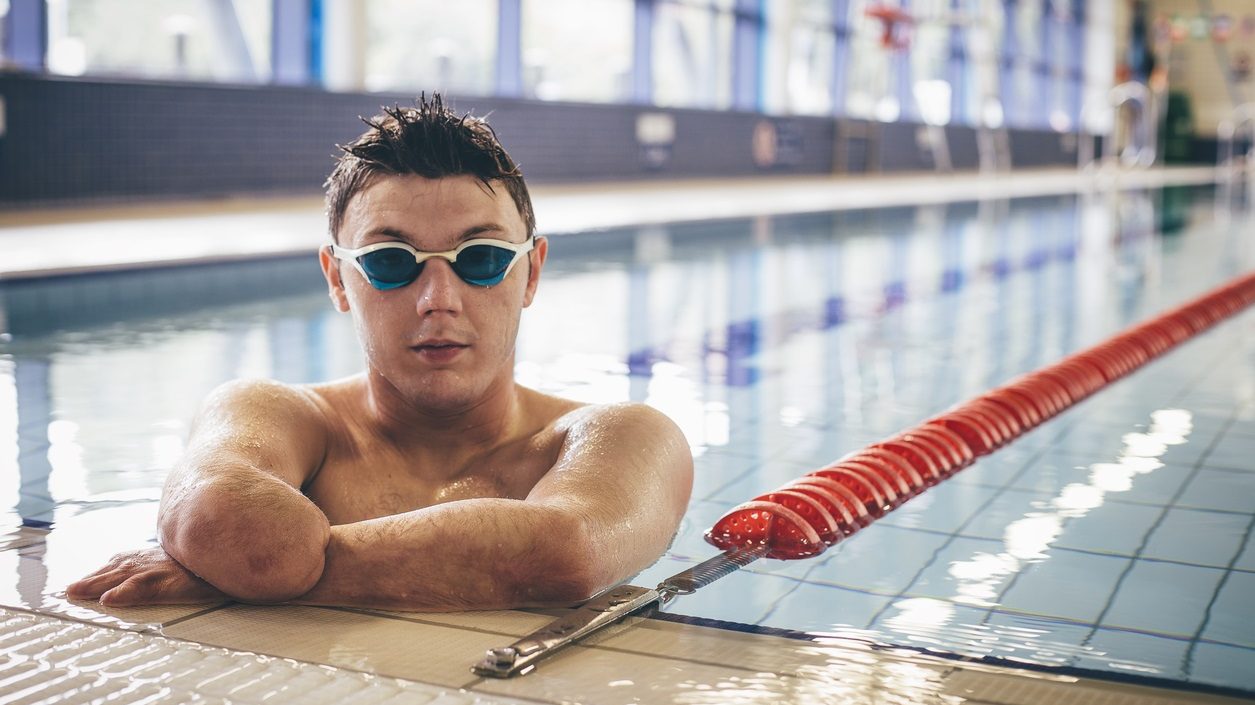Tsue Andersen remembers her first time holding a prosthetic limb. She was 10 years old and was volunteering at a national level para-swim meet when she was asked to carry one of the athlete’s prosthetic legs to the other side of the pool. “It was really cool, but all I remember thinking is, ‘are legs supposed to be this heavy?’”
Fast forward 15 years and Tsue, who went on to volunteer as a para swimming coach, is now halfway through the Prosthetics and Orthotics program at BCIT.
Tsue didn’t always know what career she wanted to pursue so her love of sports, science, and biology first led her to complete a BSc in Kinesiology at the University of Alberta. After graduation, Tsue knew she wanted to work in rehabilitation but fields like physiotherapy and occupational therapy didn’t capture her interest as much as prosthetics and orthotics did.
What eventually drew Tsue to the BCIT Prosthetics and Orthotics program was how it calls upon a variety of skills and talents. “It’s as much an art as it is a science,” she says. “It considers the body and mind. It focuses on the ability, not the disability.”
One of only two Prosthetics and Orthotics post-secondary programs in all of Canada

BCIT’s Prosthetics and Orthotics program is one of only two of its kind in all of Canada. Tsue’s class has only twelve students, which fosters a personalized education. According to Tsue, “you become like a family very quickly. You’re not just another number in the eyes of the educators. It really sets you up for success.”
The course work in the program doesn’t just focus on prosthetics and orthotics alone; students also have courses in biomechanics, anatomy, nursing, and social science. With lots of opportunities to translate theory into practice, the Prosthetics and Orthotics program cultivates students’ ability to translate textbook knowledge into clinical practice.
“It all comes back to being able to help people.” – Tsue Andersen
For Tsue, it all comes back to being able to help people. Her work as a para swimming coach showed her how to look beyond the disability. “I met a lot of inspiring and confident people through para swimming. I want to develop that inclusive environment, and normalize what is usually considered different. It is a great moment when you witness the excitement and motivation that people feel when they achieve something they didn’t think was possible.”
“I once heard that people who have lost a limb mourn the loss similar to how they would if someone had passed away. That was very profound to me. Loss of function, or of the physical limb itself, can have significant effects on people mentally as much as physically. Helping in the process of giving back something that has been lost motivates me every day. I want to maximize people’s abilities through my work, and help them live their best lives.”
